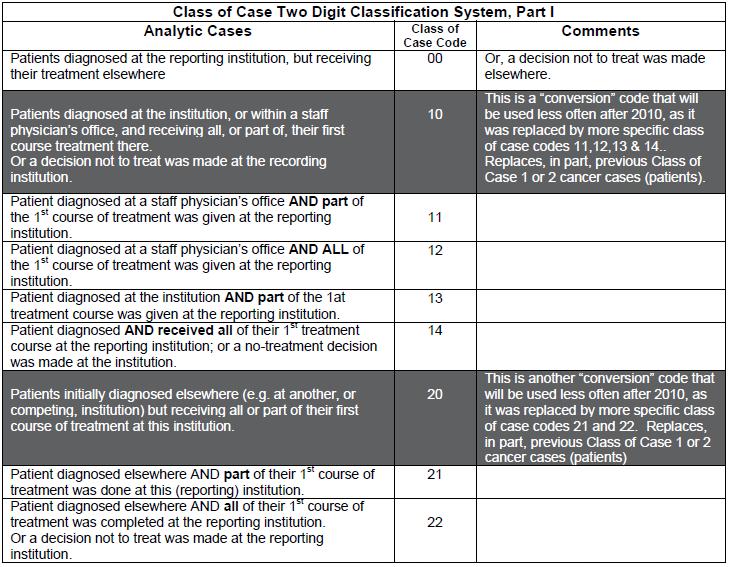- "Is Dr. Wayward a loyal supporter of our cancer program; or is he finding cancer among our patients and transferring them to the other community hospital for treatment?"
- "How many patients leave our physicians and hospital, once cancer is diagnosed, to receive their treatment elsewhere?"
- "How many patients seek breast cancer care at our institution, with our newly installed fellowship-trained breast surgeon, even when they receive their diagnosis at another local hospital?"
These questions represent several real-world questions c-suite executives often ask about their cancer programs. The answers to these questions are available immediately from their program’s cancer registry Class of Case information. Class of Case information "most precisely describes the patient’s relationship to the facility."1
In 2010, the Commission on Cancer revised the Class of Case categories, to provide substantive guidance for cancer registrars to more easily classify some cases. Class of Case information enables program and hospital administrators to answer such questions as how many (and what percentage of a year’s cancer case volume) were:
- Cases diagnosed within the institution, but moved elsewhere for treatment (by either patient preference or physician referral);
- Cases diagnosed within the institution (by its physicians) and all or most of the first course of cancer treatment delivered by that institution’s affiliated physicians; and,
- Cases which were diagnosed and treated entirely within a physicians’ office practice.
The "new" (2010) Class of Case categories replaced the single-digit model used historically. The chart below provides an easy reference to the new two digit classification scheme for analytic cancer patients.
Part II of this article will be featured in the next TOG eBlast and will include a similar graphic for understanding the 2010 two digit classification system for non-analytic cases.

Registrar Jerri Linn Phillips, who is also Manager of Information Technology and Data Standards, for the National Cancer Data Base, at the Commission on Cancer, has created a decision flow-chart (Figure 1) that explains how registrars can easily classify an analytic patient into one of the new (2010) class of case categories. » http://health-information.advanceweb.com/Editorial/Content/PrintFriendly.aspx?CC=230823
- Commission on Cancer. FORDS Manual (Facility Oncology Registry Data Standards), 2010, P 97.
